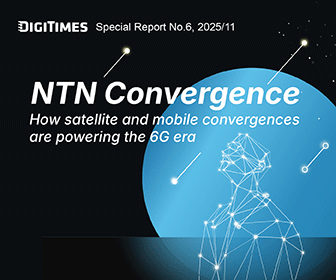As communication technology advances, the spotlight shifts beyond Wi-Fi 6 and 7 to a new protocol by the Wi-Fi Alliance: Wi-Fi HaLow. Targeting the burgeoning needs of the Internet of Things (IoT), this innovation is poised to revolutionize sectors such as agriculture, smart cities, and industry.
NTT East, a leading Japanese telecom firm, recently made waves in Taiwan. Their mission? To discuss the current status and future potential of Wi-Fi HaLow in Japan, and to scale up its commercial use. For this ambitious venture, they are counting on Taiwan's robust information and communication technology expertise.
Norikazu Watanabe, NTT East's General Manager, emphasized the company's aggressive push into wireless services, encompassing not just Wi-Fi, but also 5G and Low Power Wide Area Network (LPWAN). By integrating wireless technology, NTT East aims to introduce applications involving robots, wearable devices, and sensors. This push is particularly critical as Japan grapples with an aging population, necessitating IoT, AI, and robotic solutions.
NTT East is also collaborating with local governments, deploying wireless base stations and solutions that span technologies like optical lines, LAN, and 5G. Industry insiders report a surge in inquiries, nearing 200 cases over the past three years, with a 16-fold increase in orders.
The wireless solutions from Japan can be likened to Taiwan's 5G private network services, though Taiwan's focus is predominantly on indoor, small-scale settings, whereas Japan targets open outdoor environments.
Japanese firms are zeroing in on Wi-Fi HaLow, or 802.11ah. Launched in 2022 in Japan, Wi-Fi HaLow excels in long-distance Wi-Fi and video transmission for IoT. Compared to Wi-Fi 6, which drains power and requires frequent charging for IoT devices, Wi-Fi HaLow offers broader coverage, making it a game-changer in IoT development.
Watanabe highlighted Wi-Fi HaLow's ability to transmit over long distances and handle video, making it adaptable to various governmental needs, from anti-theft surveillance to agricultural monitoring. Remarkably, a 40,000-square-meter area requires just three base stations for comprehensive sensor monitoring.
Moreover, Wi-Fi HaLow's extensive signal range makes it ideal for networking in apartment complexes and high-rise buildings. Talks are already underway with real estate developers and construction firms to roll out these services.
Wi-Fi HaLow appears to fill the gaps left by current Wi-Fi standards, offering superior signal penetration and speed. Yet, Watanabe cautioned that the primary challenge remains the limited availability of terminal devices supporting Wi-Fi HaLow.
Industry experts stress that the success of any wireless technology hinges on a robust ecosystem of supporting devices. While Wi-Fi HaLow adoption is growing, it still lacks widespread terminal support.
Wi-Fi HaLow is at a pivotal juncture, with hopes pinned on increased collaboration, particularly with Taiwan's tech giants. Taiwan's prowess in chips and terminal products is crucial for bolstering the Wi-Fi HaLow ecosystem.
Taiwanese 5G private network operators note that Wi-Fi HaLow has yet to be integrated into their solutions. Nonetheless, they acknowledge its potential, particularly in terms of energy efficiency, cost, and terminal device support, and plan to keep a close watch on its evolution.
Meanwhile, Taiwanese IoT solution provider AsiaRF is already commercializing equipment embedded with Wi-Fi HaLow chips, promising a significant edge over previous IoT connections with breakthroughs in transmission range and power efficiency.



